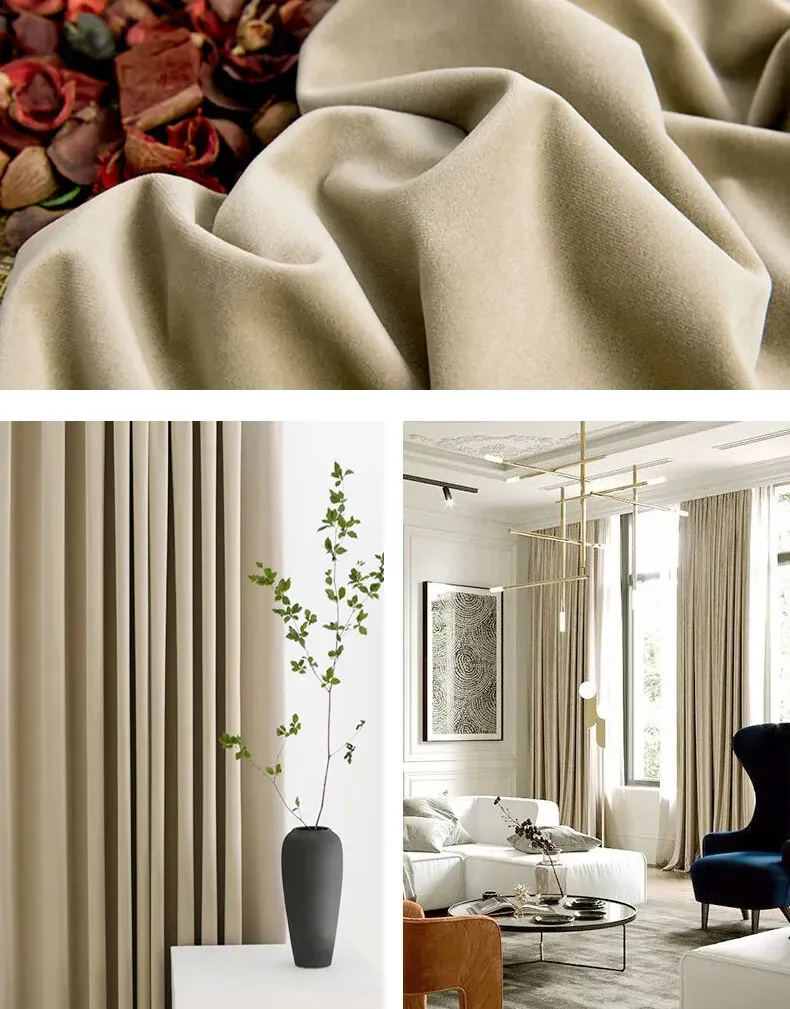Curtain Materials
May 26,2023 | SEEYE
Curtains are an indispensable part of home decor, adding personalized style while controlling light entry and ensuring privacy. When selecting curtains, the choice of material is a crucial factor as it influences the appearance, texture, light-blocking capabilities, and durability. This blog post explores several common curtain materials, discussing their advantages, disadvantages, and suitable scenarios, helping you select the ideal curtain material for your home.
1. Cotton:
Cotton curtains are one of the most popular and favored choices. They possess a soft and comfortable texture, suitable for any home style. While cotton curtains effectively block partial sunlight, they may not be the best option for complete light control. Additionally, cotton curtains tend to wrinkle easily and require frequent ironing to maintain a neat appearance. Cotton curtains are especially suitable for spaces like bedrooms, living rooms, and offices, where a relaxed and pleasant ambiance is desired.

2. Linen:
Linen curtains provide a natural and airy feel, ideal for creating a pleasant atmosphere. They offer good breathability and durability, along with moderate light-blocking capabilities. Linen curtains' natural texture makes them suitable for various home styles, particularly suitable for coastal, rustic, or nature-themed rooms.

3. Polyester:
Polyester curtains are an economical choice, offering advantages such as easy cleaning, wrinkle resistance, an
d colorfastness. They typically have high light-blocking capabilities, making them suitable for rooms requiring more privacy and light control, such as bedrooms, media rooms, or offices. However, compared to natural materials, polyester may lack the organic texture and feel, giving off a slightly artificial appearance. Polyester curtains are well-suited for modern or minimalist decor styles.

4. Velvet:
Velvet curtains bring a sense of luxury and comfort to a room, featuring a dense texture and excellent light-blocking properties. They are often used in formal or opulent decor styles, such as in living rooms, dining rooms, or master bedrooms. However, velvet curtains require extra care to prevent wrinkling and damage.

5. Sheer:
Sheer curtains are transparent and lightweight, allowing soft natural light to filter through, creating a gentle and romantic ambiance. Sheer curtains are suitable for spaces like living rooms, balconies, or kitchens, where maintaining a bright and airy feel is desired. They can also be layered with other curtains to add depth and visual interest.

6. Blackout:
Blackout curtains are specially designed to block out light. They employ special materials and techniques to effectively prevent sunlight and external light from entering, providing enhanced privacy and light control. Blackout curtains are suitable for rooms that require complete darkness, such as bedrooms, media rooms, or nurseries.
Conclusion:
When selecting curtain materials, it's essential to consider aesthetics, light control capabilities, durability, and suitable scenarios. Different materials cater to different decor styles and needs. Whether you desire soft natural light, a touch of luxury, or complete light control, choosing the right curtain material will enhance the unique charm and functionality of your home. Remember to select materials that align with the style, functionality, and personal preferences of each room, creating an ideal atmosphere for your living spaces.






